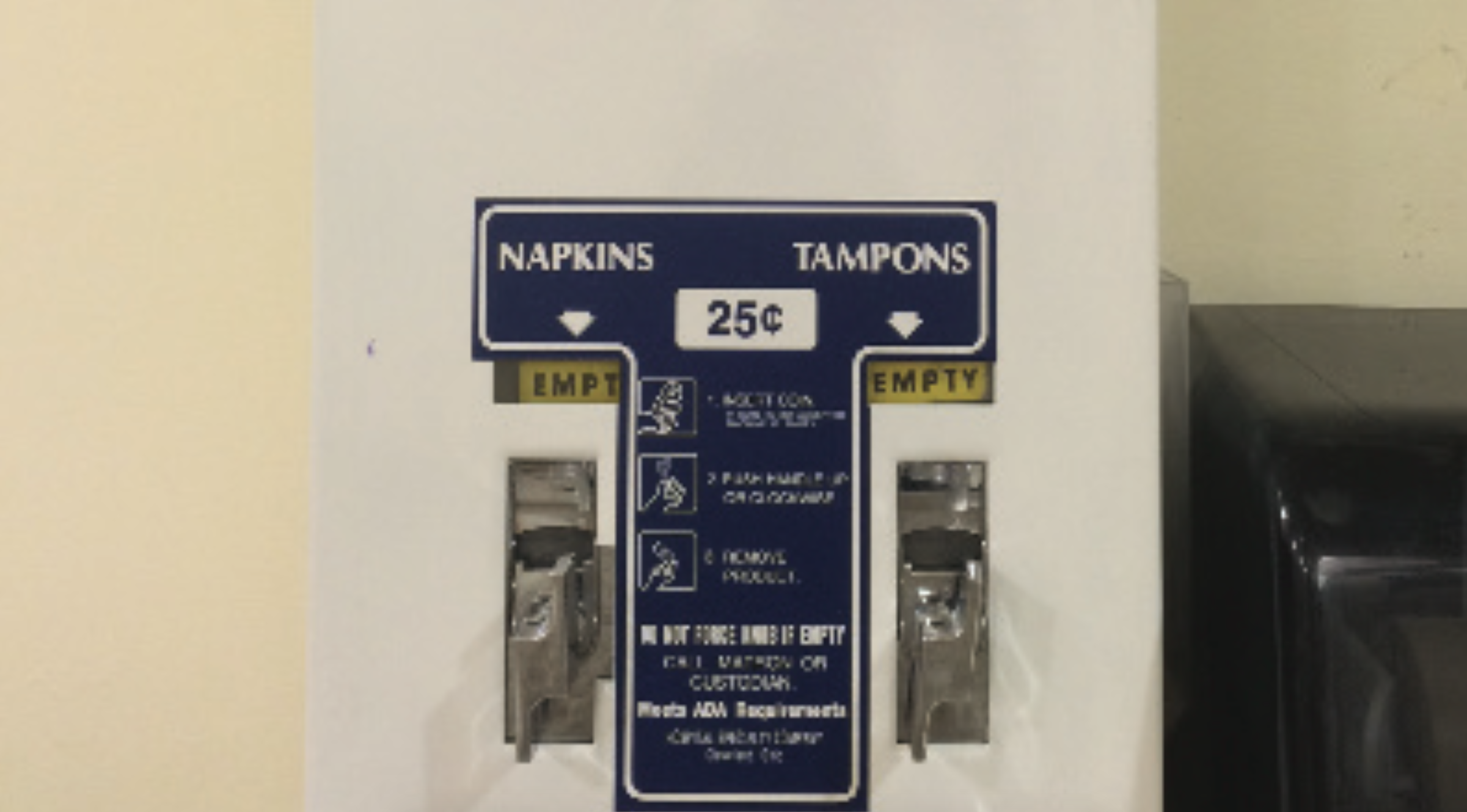Reader, do me a favor. Before continuing, name in your head some basic necessities. Food is the first thing that comes to mind, right? Water. Shelter. Clothes are optional. Healthcare. Still searching? Wait! What about feminine hygiene products?
Feminine hygiene products, ranging from cloth pads to tampons to diva cups, are a reality for every woman in the United States, though access may be different in other countries and other cultures. It remains a fact, however, that cis- gender females have been ovulating and menstruating since we became multicellular, and women have been finding creative ways to handle their bodies for generations. According to Menstrual Cup.co, ancient Egyptians used softened papyrus as tampons, ancient Romans used wool, and other females used paper, moss and animal skins. The first “sanitary pads” went on sale in 1896, but it wasn’t until the mid-1920s and the advent of closed-crotched underwear that we started to move towards our Americanized versions of moss pads.
Nowadays, women’s lives seem more hectic and demanding than ever, and society expects us to work whether we are doubled over from cramps or not. It makes sense, then, that most organizations – St Lawrence included – have tampon and pad dispensers installed in their bathrooms in case of emergency. This trend, however, seems to be changing on campus.
Approximately three weeks ago, pink signs began appearing on every dispenser saying, “Attention: This machine is no longer in service
and will be removed in the near future. Feminine hygiene products are available for purchase at the Bookstore.” I contacted Facilities and the department for Environmental Health and Safety and have not yet received an answer. Therefore, I am not quite sure why these ‘machines’ are being removed. While an answer would be greatly appreciated, it may be beside the point.
As a woman, I am willing to make the radical claim that it is necessary to have access to a product that prevents blood and the lining of one’s uterus from pouring down one’s leg. Curious to understand a broader spectrum of opinions, I performed an informal survey asking cis- gender women whether or not they had ever used the dispensers, if they knew of their imminent removal, and what their thoughts were on the matter. The responses were varied, but 13 of 17 women concluded that while not all those questioned had relied on the dispensers (citing hormonal birth control, a lack of quarters, and personal preparation), they should not, in any way, be taken out.
Women surveyed said things like: “I personally have never used them, but I would be concerned for someone who did suddenly need to and couldn’t,” and “The signs say you can buy tampons at the bookstore, but the point of having them in the bathroom is for when you need one while you are [there]. Are we expected to stuff toilet paper in our pants and go to the bookstore?” Many women cited the fact that the dispensers are often empty and that friends can usually provide supplies. One responder said, “…so few people do actually use them…I would be concerned if students felt they were having
an important resource taken away, but I am unsure if anyone actually feels this way.” I wanted to know, however, how legitimate the claim that one could purchase pads at the Bookstore was, and a quick trip there resulted in my staring at a shelf of four tampon boxes and four packages of mini-pantiliners. It is true that at other times heavier pads have been available, but for a campus of at least one thousand (guesstimating here) menstruating individuals, the store seemed about as well-stocked as the dispensers.
Which is, of course, the main point of this article: why are products that are vital to female functioning not readily available to those in need? New York State is not alone in taxing tampons and diva cups; the Department of Taxation and Finance states: “Feminine hygiene products are generally used to control a normal bodily function and to maintain personal cleanliness. Sales of these products are, therefore, generally subject to sales tax.” Bathrooms with dispensers are often no help anyway because St Lawrence rarely fills them, and perhaps this is due to the lack of demand. As one survey taker so aptly put it, however, “Low use for an emergency item is not grounds for removing it. Imagine if they took out all the AEDs because no one had a heart attack for 10 years, or all the fire extinguishers because the building had never burned down. What is wrong with them being there now? If they were used so infrequently, why would it be trouble to fill them up once in a while? I cannot see how having them in the bathrooms is detrimental, except maybe that they’re ugly. But you know what’s even uglier? Free bleeding.”



